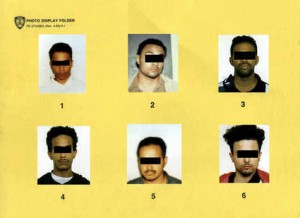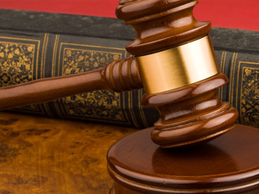Identification Proceeding: Photo Array Unduly Suggestive If Not Preserved For Trial
People v Holley
2015 NY Slip Op 09314
Decided on December 17, 2015
New York Court of Appeals
Issue: Whether the Defendants pretrial photo array identification procedure was unduly suggestive and presumptively suggestive when the police failed to preserve a record of the photographs shown to witness and the photos were displayed by means of a photo manager system or similar system that randomly generates photo arrays.
Holding: The Court of Appeals held that whether a photo array is unduly suggestive is a mixed question of law and fact and their review is limited to whether there is support for the finding, People v Sanchez, 21 NY3d 216, 225 [2013].
When reviewing whether a pretrial identification procedure is unduly suggestive is subject to well-established burden-shifting mechanism. Initially, the People have the burden of producing evidence in support of the fairness of the identification procedure. If this burden is not sustained, a peremptory ruling against the People is justified. If the People meet their burden of production, the burden shifts to the defendant to persuade the hearing court that the procedure was improper. While the People have the initial burden of going forward to establish the lack of any undue suggestiveness in a pretrial identification procedure, it is the defendant who bears the ultimate burden of proving that the procedure was unduly suggestive, People v Chipp, 75 NY2d 327, 335[1990].
The Court held that there is support in the record for the finding that the People met their initial burden of producing evidence of the lack of any undue suggestiveness. Also, there is support for the finding that defendant did not meet is ultimate burden of proving that the procedure was unduly suggestive.
Facts: Two young women were standing on a subway platform when a man attempted to steal the one womans purse. The man kicked and punched one of the woman and a bystander and fled. A Detective was assigned the case and interviewed the women. The woman described the man, and the following day were invited to view a series of photograph arrays generated by the Police Departments photo manager system, a computer database that contains the photographs of individuals who have previously been arrested. The victim identified defendant Todd Holley as the attacker on the second page. She was then showed more pages and perhaps as many as 20 over the course of an hour. She identified the defendant as the perpetrator in two additional photographs.
Defendant was charged with one count of attempted robbery in the third degree and two counts of assault in the third degree. At the suppression hearing, the detective described the procedures he had followed with the photo manager system and testified at the time he showed the victim the photo arrays; he did not have a suspect in mind. Cross-examination disclosed that the detective had not preserved the photo arrays that were shown to the victim for the hearing court to review. Defendant moved to suppress all identification testimony. He argues that the Peoples failure to preserve the photo arrays entitled him to a presumption of suggestiveness, and that; in any case, the procedure using the photo manager system was unduly suggestive. The Supreme Court found that the pretrial identification procedure was not unduly suggestive. The jury found defendant guilty and defendant appealed to the Appellate Division. The Appellate Division affirmed holding that the use of the photo manager system procedure was not unduly suggestive.
Legal Analysis: The Court of Appeals held that whether or not a lineup is unduly suggestive is a mixed question of law and fact, People v Mcbride, 14 NY3d 440, 448[2010]. Whether a photo array is unduly suggestive is a mixed question of law and fact and their review is limited to whether there is support for the finding, People v Sanchez, 21 NY3d 216, 225 [2013].
The law requiring that the prosecution preserve a photo array shown to an identifying witness was first applied to physical books and drawers on photographs, but there is nothing about the requirement that would limit it to that context. A detective who shows an identifying witness a book on photographs must preserve the photographs that were shown, together with their arrangement book, and must keep some record of the order in which the pages were displayed, Similarly, a detective who shows a witness photographs on the photo manager system or via a similar computer-assisted process must carry out whatever steps are necessary to ensure that he or she can recreate in some way during a suppression hearing the display of the photographs in the precise arrangement and order in which they were shown to the witness.
The Court held that when using a photo array as an identification procedure, the People should preserve a record of what was viewed. Failure to do so gives ride to a rebuttable presumption that the array was unduly suggestive. The obligation to preserve is not diminished by the type of system used. Computer screen or mugshots book, the Peoples obligation is the same.
A detective who shows an identifying witness a book of photographs must preserve the photographs that were shown, together with their arrangement in the book, and must keep some record of the order in which the pages were displayed. Similarly, a detective who shows a witness photographs on the photo manager system or via a similar computer-assisted process must carry out whatever steps are necessary to ensure that he or she can recreate in some was during a suppression hearing the display of the photographs in the precise arrangement and order in which they were shown to the witness. This is not creating evidence for the benefit of the defendant, but preserving evidence as required by the law protecting the defendants right to a fair trial.
 Here, the People failed to preserve a computer-generated array of photographs shown to an identifying witness, giving rise to a rebuttable presumption that the array was unduly suggestive. Nevertheless, in the present case, the People overcame that presumption through testimony at the suppression hearing. The detectives testimony about how the computerized procedure operates sufficiently established its fairness. The fact that the police failed to preserve the arrays viewed by the witness does not warrant a different conclusion. He also testified that he did not consider defendant a suspect before showing the witnesses the photographs from the photo manager system. Moreover, the witnesses viewed about a hundred photographs, and identified defendant, and only defendant, consistently. The Court concluded that there is support in the record for the finding that the People met their initial burden of producing evidence of the lack of any undue suggestiveness. The Court also concluded that there is record support for the finding that defendant did not meet his ultimate burden of proving that the procedure was unduly suggestive.
Here, the People failed to preserve a computer-generated array of photographs shown to an identifying witness, giving rise to a rebuttable presumption that the array was unduly suggestive. Nevertheless, in the present case, the People overcame that presumption through testimony at the suppression hearing. The detectives testimony about how the computerized procedure operates sufficiently established its fairness. The fact that the police failed to preserve the arrays viewed by the witness does not warrant a different conclusion. He also testified that he did not consider defendant a suspect before showing the witnesses the photographs from the photo manager system. Moreover, the witnesses viewed about a hundred photographs, and identified defendant, and only defendant, consistently. The Court concluded that there is support in the record for the finding that the People met their initial burden of producing evidence of the lack of any undue suggestiveness. The Court also concluded that there is record support for the finding that defendant did not meet his ultimate burden of proving that the procedure was unduly suggestive.
There is support for the Appellate Divisions finding that the detective entered enough information about the perpetrators physical features to ensure that the photo manager system would generate a fair selection of photos rather than an array in which defendants image would stand out as markedly different. Accordingly the Court of Appeals affirmed the order of the Appellate Division.
